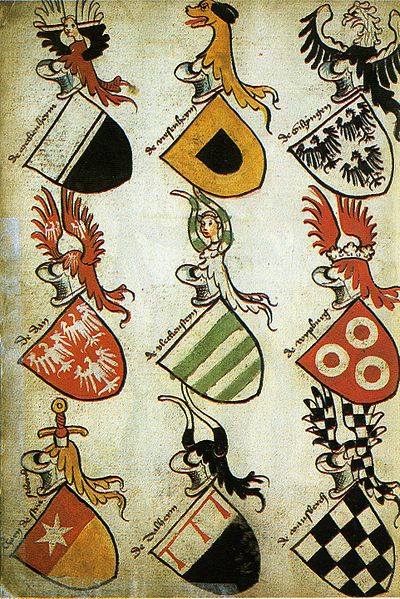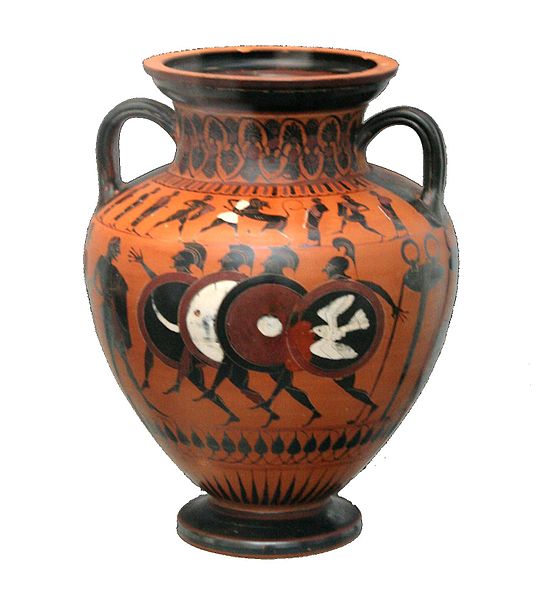A crest is a component of a heraldic display, consisting of the device borne on top of the helm. Originating in the decorative sculptures worn by knights in tournaments and, to a lesser extent, battles, crests became solely pictorial after the 16th century.
A knight with an eagle crest at the Saracen Joust in Arezzo, Tuscany.
Sir Geoffrey Luttrell, with fan crests displaying his arms on both his helmet and his horse's head. From the Luttrell Psalter, c. 1330.
Arms of the Margrave of Brandenburg-Ansbach, with fifteen crested helms.
British crests in an 1817 book.
Heraldry is a discipline relating to the design, display and study of armorial bearings, as well as related disciplines, such as vexillology, together with the study of ceremony, rank and pedigree. Armory, the best-known branch of heraldry, concerns the design and transmission of the heraldic achievement. The achievement, or armorial bearings usually includes a coat of arms on a shield, helmet and crest, together with any accompanying devices, such as supporters, badges, heraldic banners and mottoes.
The German Hyghalmen Roll was made in the late 15th century and illustrates the German practice of repeating themes from the arms in the crest. (See Roll of arms).
Reverse of the Narmer Palette, circa 3100 BC. The top row depicts four men carrying standards. Directly above them is a serekh containing the name of the king, Narmer.
Fresco depicting a shield of a type common in Mycenaean Greece.
Vase with Greek soldiers in armor, circa 550 BC.








